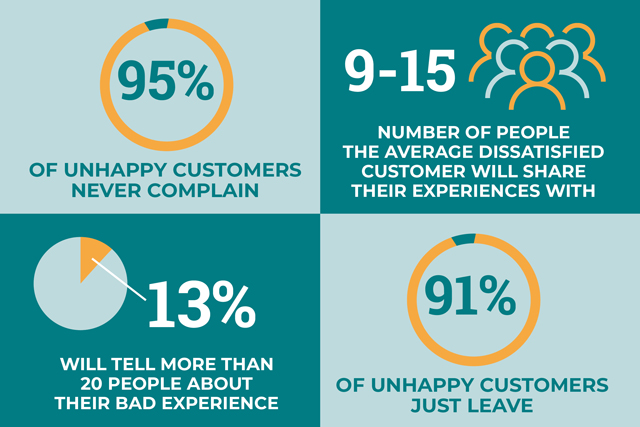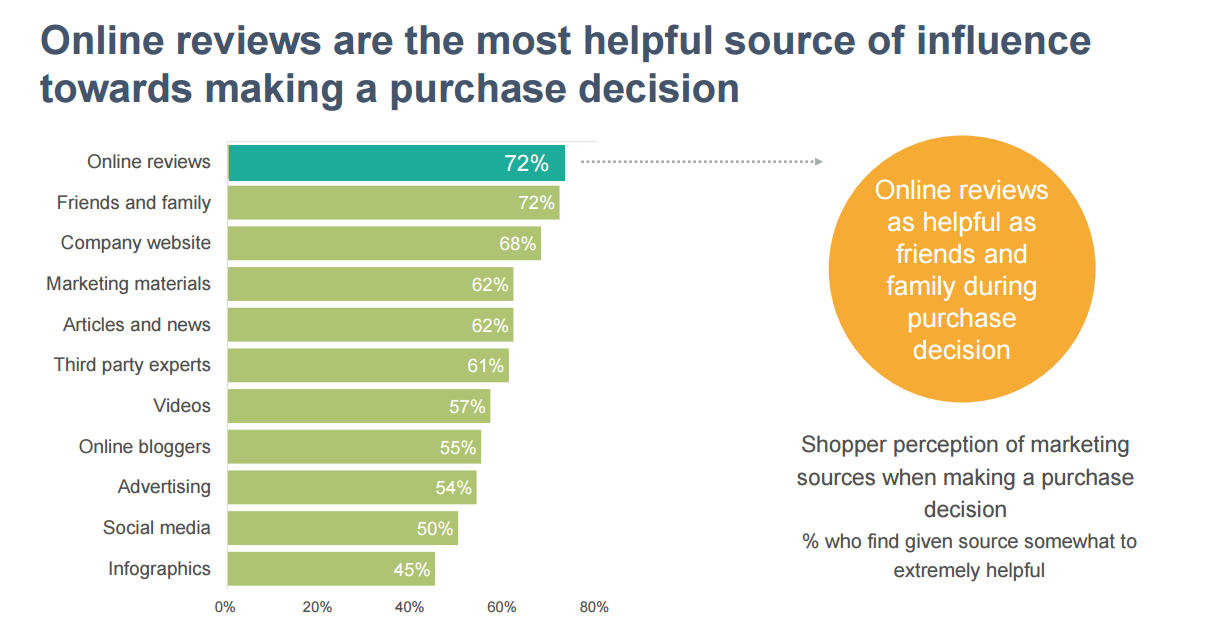Negative feedback is never fun to receive. People can be insulting, over-critical, and downright rude. It takes a strong person to take these barbs and not feel like giving some back.
However, negative feedback is just what a company needs, so you should welcome it, even seek it out. I know this does not sound like something you want to do. But by the end of this piece, you’ll be raring to snap up those snipes.
Because, just as BYOD (Bring Your Own Device) is gaining in popularity in the workplace, so should BYOG (Bring Your Own Gripe) be all the rage with businesses. Even a full-on moan is communication and communication is what business is all about.
So, What’s So Positive About Negative Feedback?

Your customers are your lifeblood.
You may have the best product in the field. You may have environmental credentials that make the earth purr with appreciation. You may have the coolest logo. You may have cracked the secret to eternal life. But if customers aren’t buying, the business is dying.
If customers stay away, you need the inside track on why they’re doing this. This is where negative feedback comes in.
Imagine that your business is at a bit of a fork in the road. You think that you might need the wisdom of a consultant. Two things might stop you.
Firstly, they aren’t cheap. If so, they’re probably not very good. Plenty of people think that any idiot can run a successful business: next time you’re in a bar, the place will probably be full of these respected experts—give them a wide berth.
Secondly, they might not know your business well enough to give relevant advice. Every business is different. For instance, a consultant who has steered clothing stores to greatness might struggle to do the same with a communications company. Sure, they might eventually get the measure of how to sell an enterprise communications solution, but do you want them learning on your dollar?
But imagine if that consultant just came in through the door, with their finger on what your company is doing wrong, and gave you this advice for free? Step forward, complaining customers! And because they’re your customer, they know your business, so they’ll be giving somewhat informed observations.
They don’t just know your business—they care about it enough to bother to give you feedback. It’s well-known that most unhappy customers don’t tend to let the company know why they’re displeased.
All that woe spreading to other potential customers would make your business’ customer service reputation plummet. And you know nothing about it.
You should welcome the customers who speak up with the warmest of metaphorical embraces. It does not matter how their complaint comes across and the exact nature of their dissatisfaction. They’re showing you how to make your business better. Appreciate them for it.
There are several steps explained below that you should take when a complaint comes in. You’ll notice the use of alliteration to try to embed the processes in your mind.
1. Initiate Immediate Issue Inspection
Not every complaint is fair. Sometimes, you may be the target of an individual who likes complaining, whether their concern is legitimate or not. Or you may receive a piece of negative feedback that indicates how misguided the customer is.
For instance, your communications company is offering customers a free virtual number. A customer who thinks that this means they’re entitled to as many free virtual numbers as they like is clearly mistaken.
It doesn’t mean that you should ignore the issue altogether. It might be the case that the customer is unwittingly channeling a groundswell of demand for an offer of more virtual numbers. It then falls to you to assess what this would mean in terms of outlay and if this is something you think you would recoup in new business.
So, even if a customer’s issue is plainly unsupported by the evidence, it may uncover areas that might be wise to consider.
When on the receiving end of a complaint, ask for more information—especially in the case of apparently nonsensical complaints. If what the customer is telling you makes no initial sense, it may well be the case that eliciting a few more details will provide a little context, against which the complaint will perhaps be seen to be more legitimate.
2. Rapid Response Renders Rewards
Customers today expect much more than they did a few years ago. This is why improving customer service is growing more critical.

It is beneficial to initiate procedures that enable you to respond to customers’ communication in minimal time. Nothing gets a customer’s goat like feeling ignored. Slow responses represent terrible customer service, which can propel customers into leaving a company.
The unbelievable thing is that companies don’t seem to have taken this on board. Fast response times are of paramount importance to 75% of customers. However, what’s the average time taken to respond? 12 hours, 10 minutes. Appalling. So, you can do a whole lot better than the average.
However, do be sure of one thing. An instant response is no good if it carries any resentment or aggression right back to the customer.
Take a breath. Consider the issue at hand by imagining the customer is talking about a completely different company. You might find that suddenly, the scales fall from your eyes, and you can now understand their point of view.
3. Politeness Perennially Pays Premiums

The old adage about good manners costing nothing remains true today. Good old-fashioned politeness is always worth adopting. It usually makes things a lot better. It can’t make things any worse.
So, employ certain deference and thank them for their valuable feedback. Expert politeness deployment can work wonders. It can even overcome the sternest sales objections as well as defuse discontent.
Try not to sound like you’re robotically churning out platitudes. It’s usually easy to spot the empty rhetoric that an employee has been trained to say. Customers are better at identifying it than corporations give them credit.
Along with basic good manners, it’s also polite to use the customer’s name. They’ll usually have provided it, so use it in that format. Using somebody’s name produces a powerful response – we tend to like things that are personalized. It appeals to our vanity and to our ages-old resource-gathering instincts: This message includes my name. It’s mine. I shall value it.
Of course, a key benefit of using a customer’s name is that it reassures them that you are not an automated process but a living human being taking the time to deal individually with their complaint. It will do a lot to initiate a certain positivity in how they then regard the unfolding liaison.
Note that what you say is only part of politeness. The tone of voice is just as important.
4. Saying Sorry Solicits Satisfaction
A well-phrased apology can do a lot to tackle a customer’s ire. It can burst their bluster balloon. Sometimes this is going to take a dose of humility to be able to apologize, especially when, as is so often the case, the employee on the phone or the email isn’t actually responsible for the transgression.
For these occasions, there’s a quote that might come in handy.
“Apologizing does not always mean you’re wrong and the other person is right. It just means you value your relationship more than your ego.”
Mark Matthews
Good customer service often requires the sacrifice of ego to benefit the business, so suck it up and make an apology. Besides, regardless of whether you actually had anything to do with the unfortunate occurrence that prompted the complaint, your function is to represent the company; that includes all the good and bad that goes with it.
For this reason, avoid putting up an apology that’s immediately tempered or even negated by any supplementary information. All that work bringing their anger down to a more manageable level, only to ruin it with a feeble attempt to wriggle out of blame. To employ another quotation:
“Never ruin an apology with an excuse.”
Benjamin Franklin
There are many customer service examples of great use of apology as a way to move things forward. Here’s one below:
It sounds heartfelt, it offers explanatory factors behind the problem, but it doesn’t shrug off responsibility. Last but not least it proffers compensation. This is expert apologizing.
5. Serving Solutions Secures Success
It may be the case that the customer’s concern can be addressed immediately. This is always preferable to having to put the whole thing into abeyance while an investigation takes place.
Say that the customer was promised a phone answering system for a small business and instead received something way out of scale with what is needed.
It was probably a simple oversight and can be resolved by ensuring that the customer gets what they wanted in the first place, perhaps with a discount or other sweetener by way of apology.
However, it might be the case that the issue doesn’t have a simple solution and is part and parcel of a complicated pattern of factors that result in this element of substandard customer experience.
In this case, see what you can do to satisfy the customer while a solution is being put together. Perhaps you can offer an alternative product or service that will keep them tied over until things can be resolved. If you can suggest a route that means that they won’t abandon or unsubscribe from your business, then that’s a job well done.
6. Continuing Care Creates Contentment

Once the issue is, one way or another, resolved and the customer has gone on their merry way, it often pays to follow up with them at a later date.
Obviously, some customers would want to be left alone, but a great many will appreciate the effort you make by checking in with them to see how things are working out. How you go about it is down to your company’s style, but a customer satisfaction survey is typically an adequate method.
Some customers will value the chance to contribute to ongoing success by providing feedback in this manner, and this can heighten the customer’s sense of ownership over the brand. All of this boils down to a greater chance of repeat business.
7. Steady Stoicism Stops Stress
On occasion, you’ll encounter a customer who wants nothing more than to take your business down. They may have their own reasons for this; it might be that their issue with your product caught them at an unpleasant time; it could be that something about your company jars with them; or maybe they merely hate the logo color.
When these individuals strike, it can be tricky. What’s worse is when they use the arena of social media to try to attack your company. You may not know the first thing about how to create an affiliate program but what you have generated here is like an affiliate but with the roles reversed: the anti-affiliate.
Reviews can be very wounding weapons, especially given the importance customers tend to give reviews when looking to purchase a product.
These characters need careful treatment. Again, politeness is enormously vital.
But if they won’t come round, don’t lose sleep over it. Post a response to the review, written in a calm and measured tone. Express regret that the customer has what appears to be an overwhelming issue, and be sure to stress what you have tried to put forward in terms of solutions.
But, in the end, you have to say to yourself: the customer is sometimes wrong. And move on.
Criticism is Nothing to Fear
No matter what the future holds for customer service, negative feedback will remain one of the most valuable commodities you have. Far from dismissing it or hoping it doesn’t arise, your business needs it like oxygen.
“Your most unhappy customers are your greatest source of learning.”
Bill Gates





